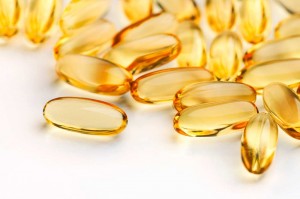There was a time when vitamin D was considered the “skeletal” vitamin. Low levels were linked to rickets and osteoporosis. But vitamin D may be an issue of life and death.
A group of researchers from the University of Cambridge, the University of Oxford, Harvard School of Public Health, and seven other institutions have concluded that low vitamin D levels are responsible for almost 13% of deaths in the U.S. That equates to about 97 deaths per 100,000 Americans per year.
That rate compares to 20% of deaths attributable to smoking, 11% to lack of exercise, and 9% to alcohol consumption. In Europe, 9.4% of all deaths were attributed to vitamin D deficiency.
The researchers defined a vitamin D deficiency as having a blood concentration of 25-hydroxyvitamin D less than 30 ng/mL. They estimated 69.5% of Americans are deficient in vitamin D. In Europe they estimate that 86.4% of the population is deficient.
In addition, the researchers estimated that 15% of the U.S. population is severely deficient. A severe deficiency is defined as having blood concentrations of less than 10 ng/mL.
The researchers drew their conclusions from data covering almost 900,000 study participants in 26 nations. Their results were published in the BMJ (formerly the British Medical Journal).
Low Vitamin D Increases Risk of Cardiovascular and All Cause Death by 35%
Their review and meta-analysis covered 73 observational cohort studies that reported serum 25-hydroxyvitamin D levels and cause of death over follow-up periods ranging from .3 to 29 years.
Compared to subjects whose vitamin D levels were in the highest one-third, those with levels in the lowest one-third of the study population had a 35% higher risk of death from cardiovascular disease or from any cause, including coronary disease, lymphoma, upper digestive cancer, and respiratory disorders.
Those with the lowest levels also had a 30% higher risk of death from non-vascular, non-cancer deaths, and a 14% higher risk of death from cancer.
They also found that each 10 ng/mL decline of 25-hydroxyvitamin D blood concentration was associated with a 16% increased risk of all cause mortality.
Vitamin D3 Supplements Reduce Risk of Premature Death By 11%
The international team of researchers also discovered that vitamin D3 supplementation reduced the risk of premature death by 11%.
They analyzed 22 randomized controlled trials of vitamin D supplements. The studies involved a total of 30,716 participants over three to seven years of follow-up. Vitamin D supplementation was compared to placebo or no treatment.
But vitamin D2 supplementation had no effect on overall mortality. In fact, in studies using a dose of 600 to 2000 IU/day of vitamin D2, the researchers observed an increased risk of mortality.
Vitamin D is a fat soluble vitamin which we (and most plants and animals) produce through exposure to the sun. There are two major forms.
Vitamin D2 (ergocalciferol) is found in plants. It’s produced by ultraviolet B irradiation of ergosterol. It can be consumed as a supplement or in fortified foods.
Vitamin D3 (cholecalciferol), on the other hand, is synthesized in the human epidermis through ultraviolet B irradiation of 7-dehydrocholesterol. It can also be consumed in the form of natural foods (for example, fish), fortified food sources, or as a supplement.
How does vitamin D prevent premature death? The researchers proposed several mechanisms including:
- Vitamin D may influence a range of biological responses involved in cellular growth, proliferation, and apoptosis, as well as immune system functions.
- Vitamin D receptors and the enzyme required for its activation are present in most human cells and tissues, indicating a major role for vitamin D in “non-skeletal” physiological processes.
- Approximately 3,000 binding sites for the vitamin D receptor have been found throughout the human genome, indicating vitamin D may regulate about 3% of the human genome either directly or indirectly.
- Higher vitamin D concentrations are associated with longer leucocyte telomere length, a potential genetic determinant of age related disorders and overall longevity.
How To Boost Your Vitamin D Levels
The researchers suggested their findings may reinforce the importance of low-cost public health strategies to reduce premature deaths from vitamin D deficiency worldwide. They proposed moderate sun exposure, supplementation, and fortifying foods with vitamin D.
They also noted that vitamin D levels are dropping globally owing to the increase in aging populations, obesity, and lack of sun exposure combined with sunscreen use.
The best way to get your vitamin D is through 10-15 minutes of exposure to the summer sun per day. This means actually peeling down and getting a good area of skin exposed without sunscreen since that blocks most vitamin D production. In the winter, safe use of UVB tanning booths can also increase vitamin D levels.
Aside from sun exposure, natural food sources for vitamin D include fatty fish (salmon, mackerel and sardines), liver, pastured eggs and grass-fed dairy products. However, most Americans don’t (or won’t) eat a sufficient quantity of those D-rich foods to get the minimum daily requirement.
Vitamin D3 supplementation is generally considered safe. The government’s recommended daily allowance for vitamin D is 600 IU with an upper limit of 4,000 IU. Many practitioners recommend much more. If you think you need more, get tested and consult a health care provider before increasing dosages.
For more information, visit GreenMedInfo’s Vitamin D page.
This article was originally published at Ready Nutrition™ on May 19th, 2014







